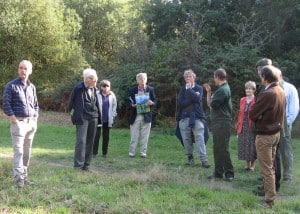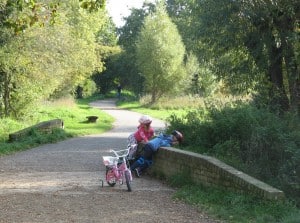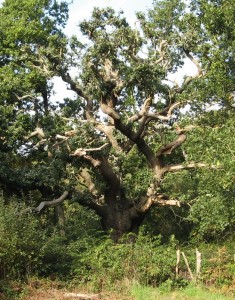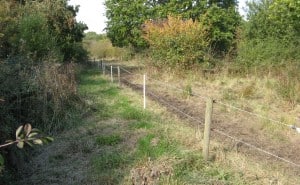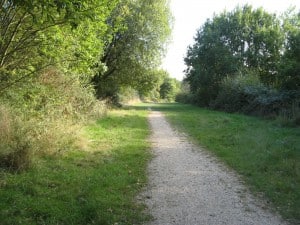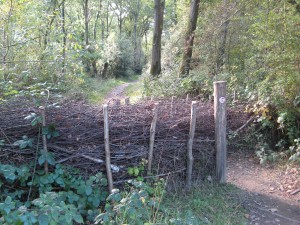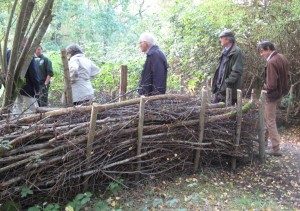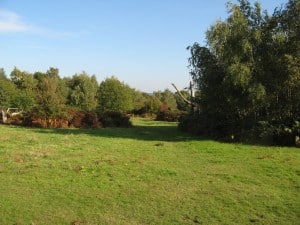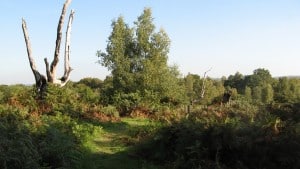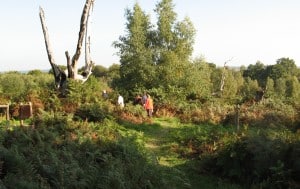Support us from £3/month
We deal with almost 1000 cases a year assisting communities, groups and individuals in protecting their local spaces and paths in all parts of England and Wales. Can you help us by joining as a member?
The Open Spaces Society has had a strong connection with the City of London Corporation all through its history, and we helped the city acquire many of its open spaces: Hampstead Heath, Epping Forest, Burnham Beeches and the Coulsdon Commons. It was therefore fitting that, as one of our 150th anniversary events, we should visit the city’s Ashtead Common in Surrey.
We met at the Ashtead visitor centre on Sunday 11 October and the ranger, Andy Thwaites, treated us to a fascinating and well-researched talk. He had discovered that our former secretary, Lawrence Chubb, had in 1916 written an article in the Journal of the Royal Society for Arts in which he stressed the importance of the London commons ‘which bring to the doors of towndwellers a message of nature’, and he described some of the society’s early battles.
Ashtead Common is a 200-hectare area of wooded common surrounded by main roads including the M25. It is a remarkable survival and a peaceful oasis in an urban area.
The city bought the common from the Manor of Ashtead in 1991 and manages it under the 1878 Corporation of London (Open Spaces) Act. It is, as Andy said, ‘a big lump of clay’ which was always regarded as waste land on which commoners had rights to graze stock and collect firewood. There are over 1,000 veteran oak pollards and it is rich in rare invertebrates which favour wood pasture.
Since grazing is necessary to maintain the woodpasture, the city has a herd of docile Red Sussex cattle which are moved around by use of temporary electric fencing.
The common is well used by local people, but because it lacks car parks, cafés and children’s play areas the use is fairly low key. The main concern is the damage caused to the paths by riders and cyclists. the city has done some surfacing of paths and this has blended in well.
There is a team of volunteers who carry out a total of 7,000 hours of work a year and have, among other things, made ‘dead hedges’ which deflect riders and cyclists from footpaths which are unsuitable for them. There are concessionary bridleways and a public right to walk over the whole common.
Another risk is from fire, Phoenix Field was burnt about 20 years ago and still looks different from the rest of the common. Another smaller area was burnt (probably arson) in April and it has recovered. The rides surrounding it were important for containing the fire.
Andy led us on a walk around part of the common and showed us many of the features which he had mentioned in the talk. It was a grand day out and we are grateful to the city and to Andy for hosting us.

